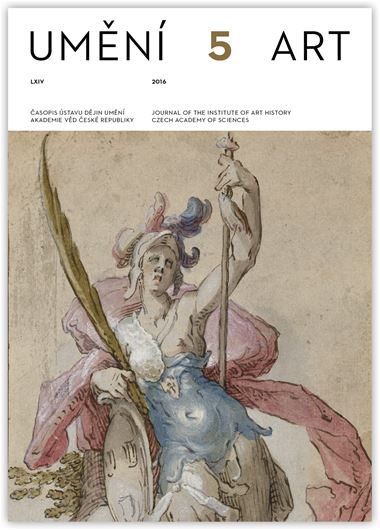Michal Šroněk
Pražský malířský cech a jeho reprezentace v pozdním stredověku a raném novověku
The article focuses on the painter’s guild that in 1348–1773 worked in Prague’s Old Town and Lesser Quarter. It focuses primarily on the late 16th and early 17th centuries, a dramatic period in the guild’s existence, when there was a shift in royal favour and Rudolph II in 1595 granted the famous privilege whereby painting was elevated from a trade to an art. This in turn led the guild to engage in activities aimed at presenting and promoting itself. Some of these activities were connected with the guild altar, dedicated to St Luke, and with a conflict the guild became embroiled in with secular and church authorities in the period after the Battle of White Mountain. Remarkably this conflict was centred on an important medium by which the guild sought to represent and present an image of itself through art, namely, the late Gothic canopy in the Church of Our Lady before Týn in Prague which was originally above the tomb of Utraquist bishop Augustin Lucian of Mirandola († 1493) and was created by sculptor Matěj Rejsek, and which was close to the site of the guild altar. By the late 16th century the guild had appropriated the canopy for itself by covering it with coats of arms and inscriptions. After 1620, as the Catholic Counter-Reformation began, Augustin’s tomb was removed, but the canopy remained in place. During the 17th century and in the early 18th, the painters were confronted with several attempts to have the canopy, as a reminder of the non-Catholic past, removed. The guild fended off these attempts with a vigorous defence strategy that often manipulated facts and rested on references to royal privilege and to the guild’s long history and roots stretching back to the pre-Hussite ‘golden’ age of Charles IV. A striking feature of the guild’s defence of the canopy in the 1660s was its intellectualism, grounded in the extreme erudition of painter Karel Škréta. After his death, the spirit fell out of aspirations for any further activities aimed at promoting the guild’s image and the guild thereafter survived on nothing more than repeated references to its past.
Full-text in the Digital Library of the Czech Academy of Sciences:
https://kramerius.lib.cas.cz/uuid/uuid:2f8b5025-0541-4b8b-85a1-61cb1f4bcfbe
< back

